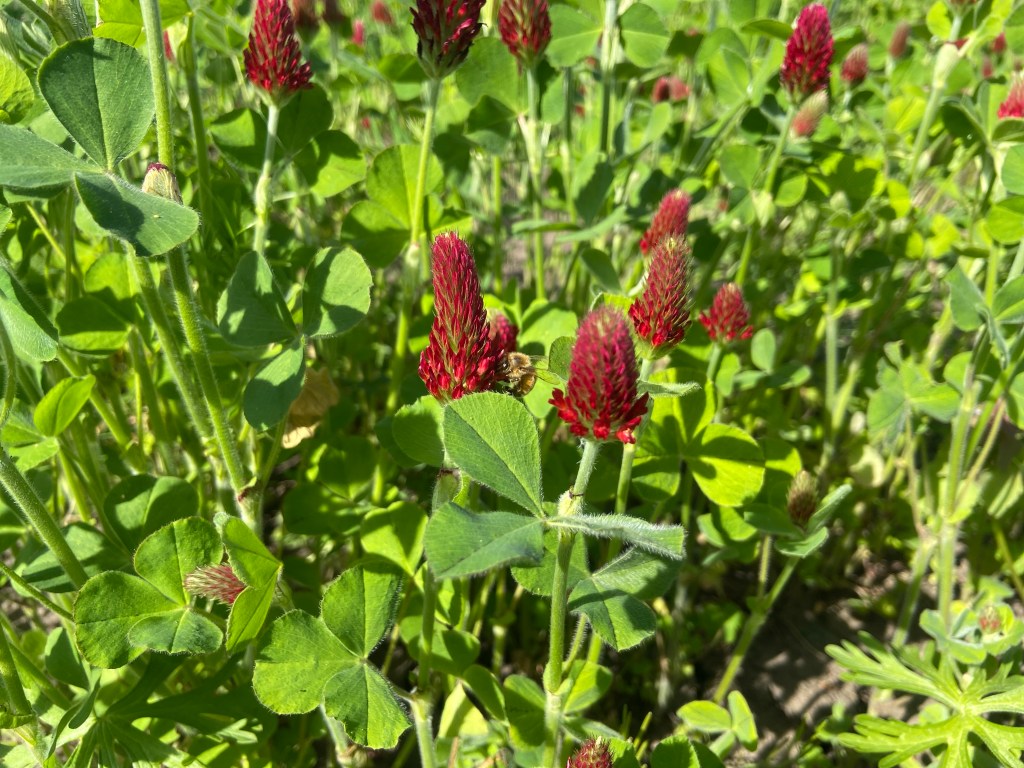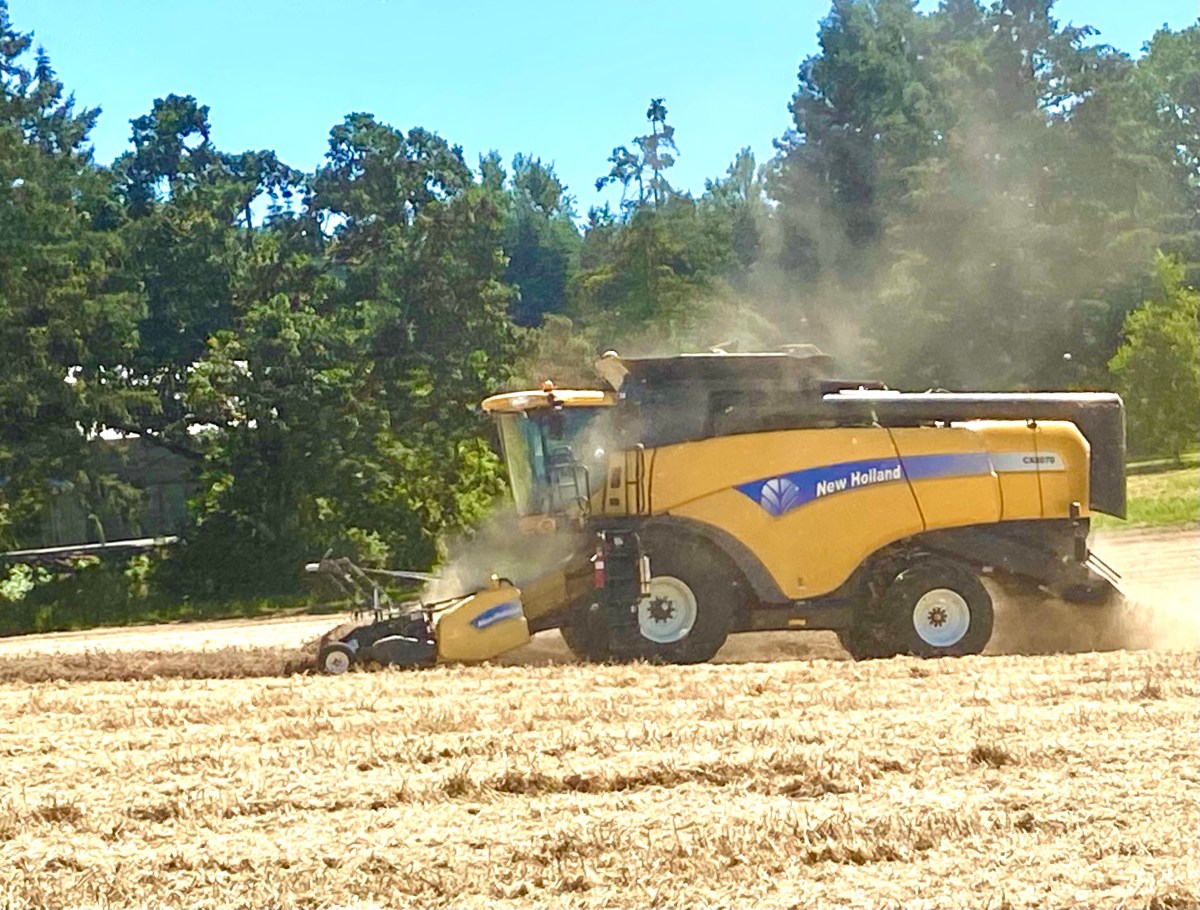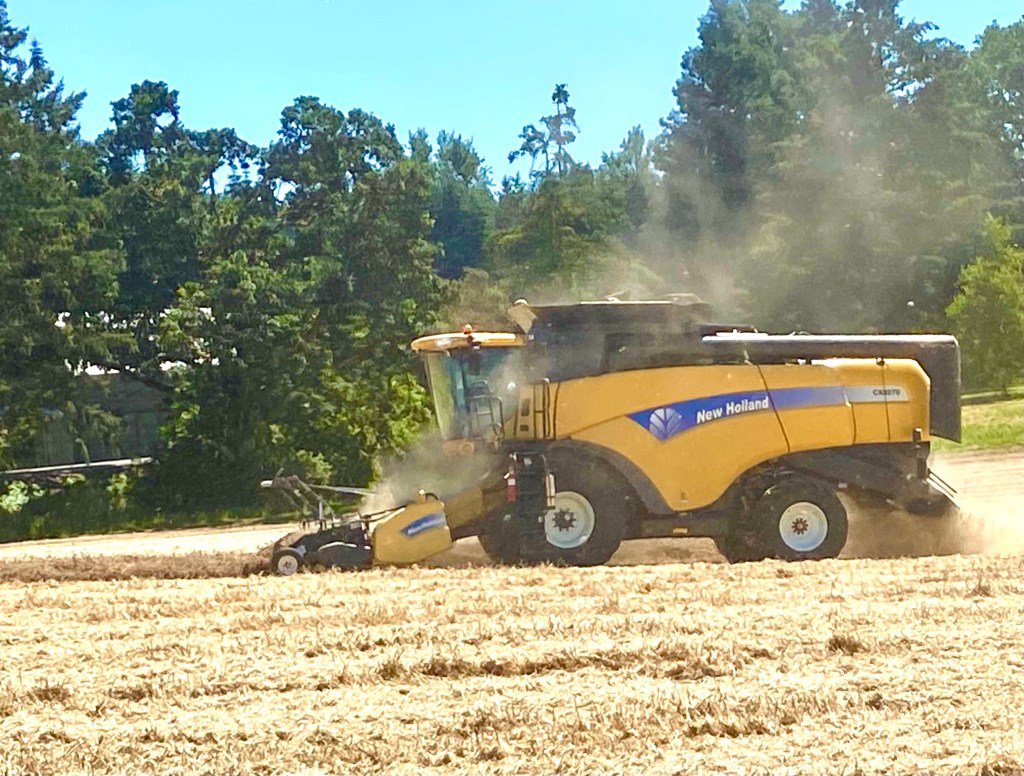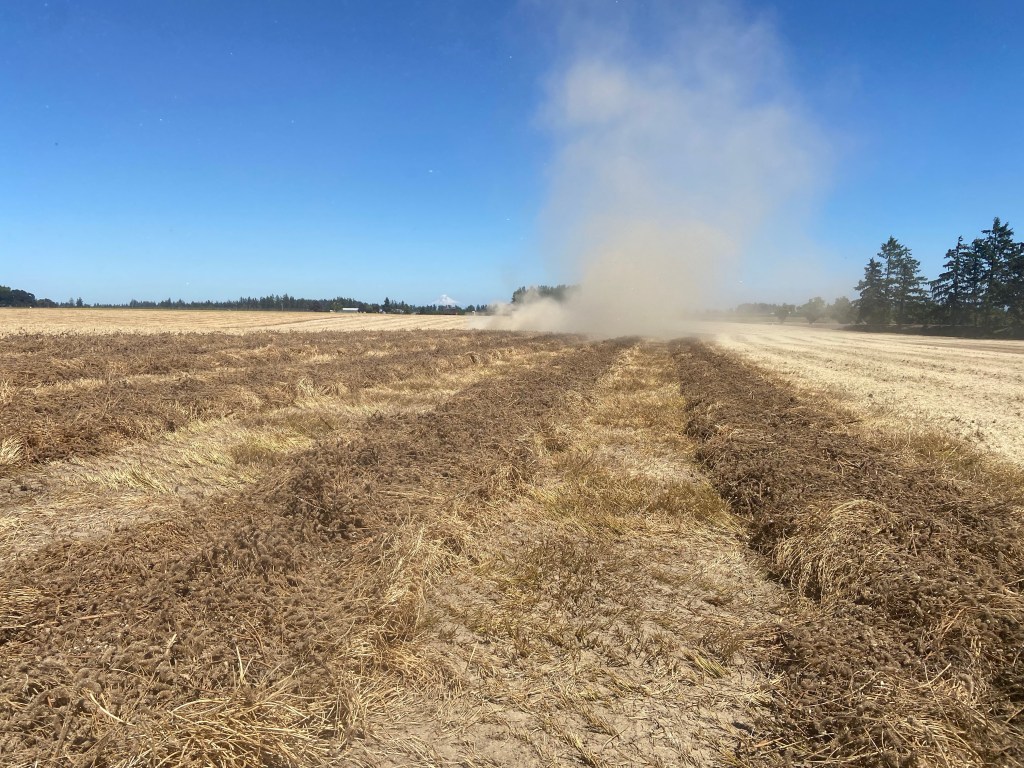This is one thing that I have to continually explain to folks. Farmers rarely have the opportunity when it comes to crop care to say, “we can just get it done later.” In a year like this when the weather isn’t cooperating to allow us to get out and care for our crops, windows are opening and closing every day.

Our crimson clover has a few of these issues going on this year. Weed control and size of the plant.
Unfortunately with our inability to access and get on the field with our sprayer (we don’t like getting stuck in the mud), we were unable to spray our usual weed control on the clover. So as the clover wakes up after being dormant so have the weeds. The window has closed to spray our normal weed control for broadleaves and we are now having to wait longer for the crop to get bigger before we apply our plan b for weed control. This isn’t ideal because the plan b herbicides aren’t as good as the ones we originally planned to use. They are also more expensive and while we wait the weeds are growing which means they will be harder to kill and control.
The clover is also really small for this time of year. It’s a crop that is usually gets planted and established in the fall and then by spring it shoots to life. Once we hit a certain amount of daylight the crop goes into reproductive mode shooting beautiful blooms up. These blooms mature after bee pollination and produce the seeds that we harvest.
We really don’t want those beautiful flowers to bloom while the stem is only a few inches high because that would mean basically little to no seed to harvest with it not having the root and stem structure to handle feeding the crop until harvest and maturity.

Crimson is a crop that actually puts nitrogen back into the soil so it’s a tough (and expensive) pill to swallow to put out more outputs (aka fertilizer) for a crop that you hadn’t planned on. But you don’t always have the perfect choice of what to do and a plan that can be followed 100% of the time. With a little fertilizer we are hoping to keep the plant growing and not blooming just a little longer to grow a better crop.
I wrote the beginning of this post quite awhile ago; today we are at a much different place in the crop cycle. The good news is that the crimson did grow taller and more lush with the fertilizer application. The bad news is that so did the weeds and we weren’t able to even use plan B for weed control. The plants are done blooming now, the bees have done all they can pollenating. and now we are just a few days from cutting it, letting it mature to the fullest in the windrow and combine it. Until it’s in the truck we won’t know what the decisions we made or were forced to make did or didn’t do for our yield.

That’s about the best way to sum up farming. Do all you can with what you’ve been given, and then pray the decisions made were the right ones to produce a good crop for the year. Then rinse and repeat year after year, always projecting as best you can, always pivoting when needed and Lord knows, always praying.








